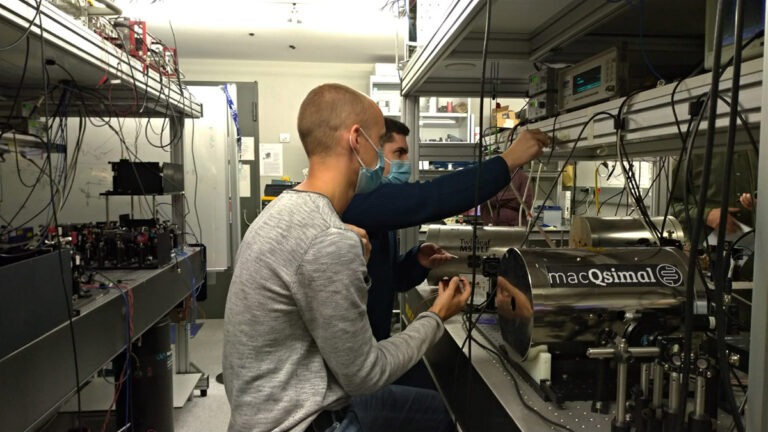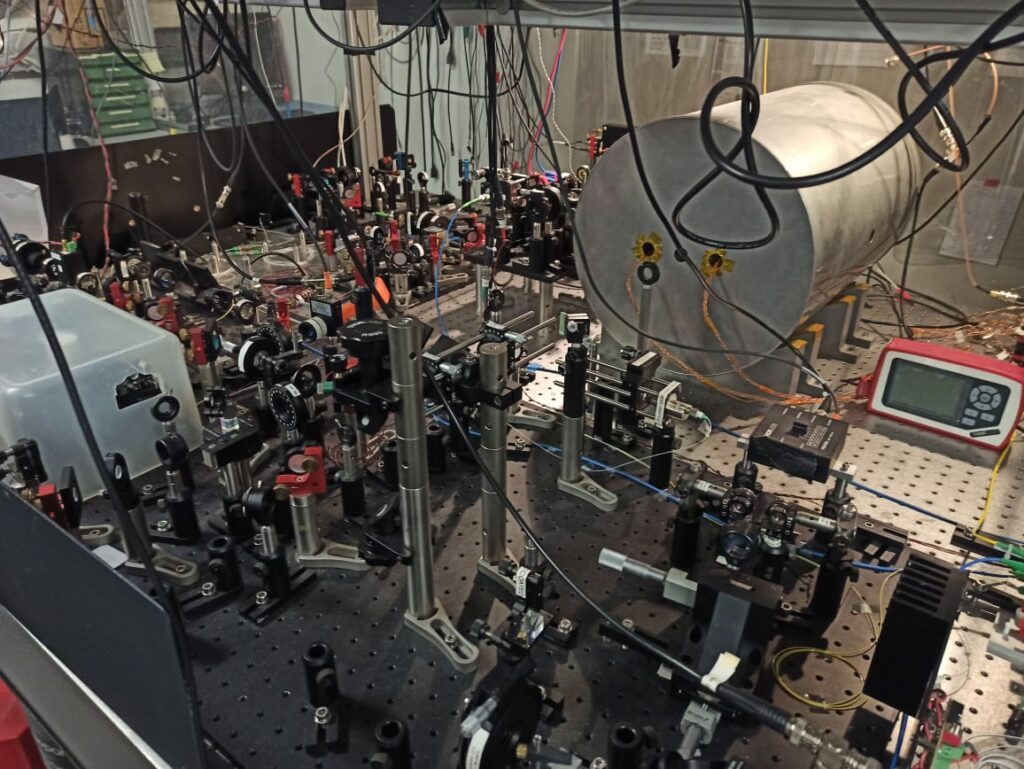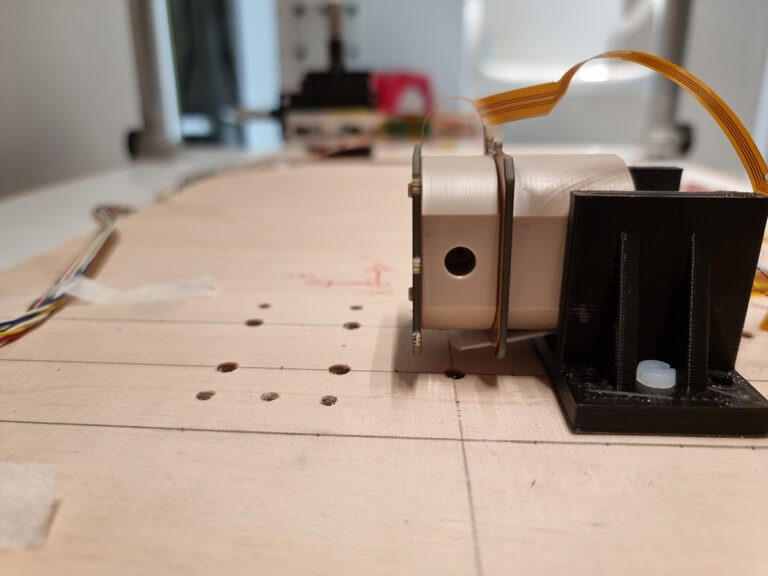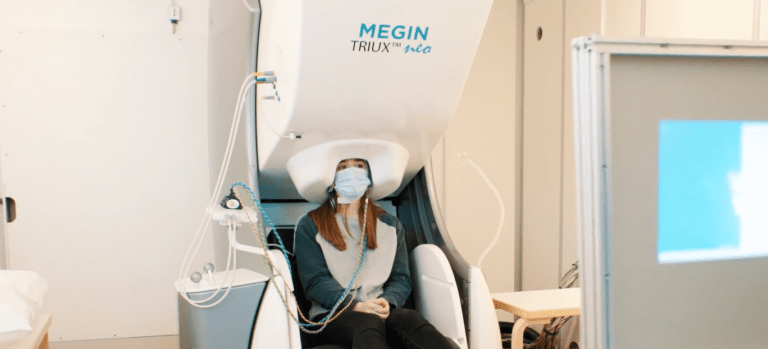Optically pumped magnetometers
Goals and background
Optically pumped magnetometers (OPMs) are high-sensitivity quantum sensors that take advantage of the unique alkali vapor properties and their interaction with external magnetic and laser fields to detect magnetic fields with unpresentable sensitivity. When compared to superconducting sensors, OPMS have strengths and weaknesses. However, they surpass the sensitivity of superconducting sensors, while also working without cryogenics, making them potentially disruptive in the biomagnetic applications of magnetoencephalography (MEG) and magneto-cardiography (MCG). Deploying OPMs in these applications requires them to be simultaneously sensitive, fast, with a large dynamic range, close packable, manufacturable, and reliable in large numbers.
Partners from ICFO, CSEM, VTT, AALTO, MEGIN, and UCPH collaborated closely to design, develop and validate compact OPMs for low-frequency and radio-frequency magnetic fields.
Next to that macQsimal partners were working on the development of entanglement-enhanced sensing for best-in-class OPMs. Adaption of cavity-QED, quantum-non-demolition, and squeezed-light techniques to the conditions found in high-performance OPMs.
Key results and impact
High-density OPM:
- Successful development of the prototype design
- Successful development of two control and measurement systems
- Successful construction of component testing workstations
Low-density OPM:
- Successful design of a fibre-coupled magnetometer prototype
- Successful development of a highly sensitive OPM optimised for the detection of biological signals
- Successful development and patenting of an approach to suppress atomic saturation to measure conductivity one magnitude below state-of-the-art experiments
- Successful design and setup of an OPM demonstrator with a metal-free sensor head to be inserted into an MRI scanner
Outcomes
- Laser-written vapor cells for chip-scale atomic sensing and spectroscopy
Lucivero, V.G., Zanoni, A., Corrielli, G., Osellame, R., Mitchell, M.W. (2022) Optics Express, 30(15), 27149-27163. - Squeezed-light Enhancement and Backaction Evasion in a High Sensitivity Optically-pumped magnetometer
Troullinou, C., Jiménez-Martínez, R., Kong, J., Lucivero, V. G., Mitchell, M. W. (2021) Physical Review Letters, 127 (19), 193601. This publication is also available on arXiv. - Scale-invariant spin dynamics and the quantum limits of field sensing
Mitchell, M.W. (2020) New Journal of Physics, 22(5), 053041. A preprint available on arXiv. - Measurement-induced, spatially-extended entanglement in a hot, strongly-interacting atomic system
Kong, J., Jiménez-Martínez, R., Troullinou, C., Lucivero, V., Tóth, G., Mitchell, M.W. (2020) Nature Communications, 11(1), 2415.
The macQsimal partners produced seven deliverables on OPMs. Please refer to the publicly available deliverables for more information.
- Squeezed-light enhancement of sensitivity and signal bandwidth in an optically-pumped magnetometer ICFO, 2021, 2nd EQTC, online.
- Optically-pumped magnetometry and comagnetometry with Bose-Einstein condensates ICFO, 2021, WOPM 2021, online.
- Sub-pT optical magnetometry with squeezed light ICFO, 2020, micro-WOPM 2020, online.
The recording of the presentation is available on Youtube.
Performed activities
Laboratory setup for OPMs
In macQsimal we characterised, tested, and optimised the different sensor components to construct an enhanced OPM. The greater objective was to achieve a superior balance between magnetic sensitivity, size and further operating constraints, e.g. proximity to the cerebral cortex, in MEG.
Among the novel characteristics of the instrumentation employed by the macQsimal partner ICFO was the use of integrated three-axis biplanar PCB coils. These were designed specifically to maximise the magnetic field homogeneity at the cell region in all three directions to enable the packing of multiple sensors in close proximity for an arrayed operation. While ICFO’s development test bench occupied an entire optical table, the developed prototypes are the size of a fingertip
Quantum-enhanced OPMs
The magnetic sensitivity of OPMs is fundamentally limited by quantum noise. In these sensors, two quantum systems – atoms and light – interact to produce the signal. Understanding and controlling the quantum noise in this interacting system is an outstanding challenge. In macQsimal, we applied quantum resources, such as optical and spin squeezing techniques, and quantum entanglement to improve the performance of state-of-the-art atomic sensors as OPMs.
Researchers of ICFO have recently demonstrated the first high-performance optically pumped magnetometer enhanced by optical squeezing.
OPMs package
The optimisation of the design and the selection of the materials were the key issues in order to obtain a non-magnetic package. The macQsimal partner VTT manufactured a low-temperature co-fired ceramic (LTCC) sensor package with a low footprint. The LTCC manufacturing technology consists of several process steps, including screen-printing of conductors, stacking of tape layers, lamination of the stack and co-firing to manufacture a multi-layer substrate. In addition, the OPM package contained the atomic vapor cell, that got assembled on a ceramic isostatic holder which was subsequently integrated into the LTCC package.
Towards market aplicability
In contrast to superconducting sensors conventionally used in MEG, OPM sensors can be placed directly on the scalp, resulting in the measurement of larger MEG signals. This improvement has been demonstrated in simulations as well as experimentally using our custom MEG system, that contains commercially available OPM sensors. Compared to superconducting sensors, OPMs have several advantages, such as their compactness and the independence of cryogenics. However, there are still some weaknesses, namely a higher price, a nonlinear amplitute response, significant crosstalk between sensors in dense arrays and a hot outer surface of the sensor. The macQsimal partners, AALTO and MEGIN are addressing these weaknesses in order to achieve market readiness.





